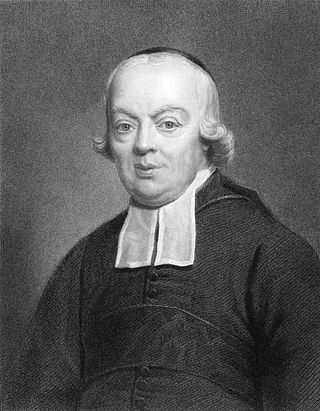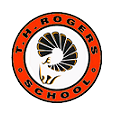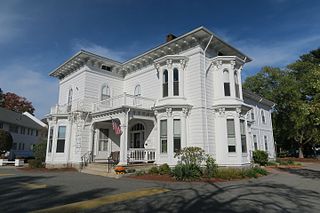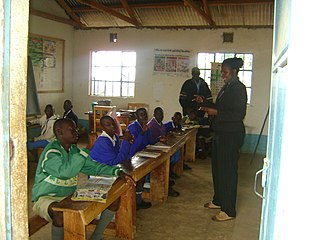
Gallaudet University is a private federally chartered university in Washington, D.C., for the education of the deaf and hard of hearing. It was founded in 1864 as a grammar school for both deaf and blind children. It was the first school for the advanced education of the deaf and hard of hearing in the world and remains the only higher education institution in which all programs and services are specifically designed to accommodate deaf and hard of hearing students. Hearing students are admitted to the graduate school and a small number are also admitted as undergraduates each year. The university was named after Thomas Hopkins Gallaudet, a notable figure in the advancement of deaf education.
Signing Exact English is a system of manual communication that strives to be an exact representation of English language vocabulary and grammar. It is one of a number of such systems in use in English-speaking countries. It is related to Seeing Essential English (SEE-I), a manual sign system created in 1945, based on the morphemes of English words. SEE-II models much of its sign vocabulary from American Sign Language (ASL), but modifies the handshapes used in ASL in order to use the handshape of the first letter of the corresponding English word.
Oralism is the education of deaf students through oral language by using lip reading, speech, and mimicking the mouth shapes and breathing patterns of speech. Oralism came into popular use in the United States around the late 1860s. In 1867, the Clarke School for the Deaf in Northampton, Massachusetts, was the first school to start teaching in this manner. Oralism and its contrast, manualism, manifest differently in deaf education and are a source of controversy for involved communities. Oralism should not be confused with Listening and Spoken Language, a technique for teaching deaf children that emphasizes the child's perception of auditory signals from hearing aids or cochlear implants.

Manualism is a method of education of deaf students using sign language within the classroom. Manualism arose in the late 18th century with the advent of free public schools for the deaf in Europe. These teaching methods were brought over to the United States where the first school for the deaf was established in 1817. Today manualism methods are used in conjunction with oralism methods in the majority of American deaf schools.

Thomas Horace Rogers School is an alternative primary and secondary public school and part of the Houston Independent School District. The school is at 5840 San Felipe in Houston, Texas, United States, outside of the 610 Loop and inside Beltway 8, west of Uptown Houston.
Manually coded languages (MCLs) are a family of gestural communication methods which include gestural spelling as well as constructed languages which directly interpolate the grammar and syntax of oral languages in a gestural-visual form—that is, signed versions of oral languages. Unlike the sign languages that have evolved naturally in deaf communities, these manual codes are the conscious invention of deaf and hearing educators, and as such lack the distinct spatial structures present in native deaf sign languages. MCLs mostly follow the grammar of the oral language—or, more precisely, of the written form of the oral language that they interpolate. They have been mainly used in deaf education in an effort to "represent English on the hands" and by sign language interpreters in K-12 schools, although they have had some influence on deaf sign languages where their implementation was widespread.

The Learning Center for the Deaf (TLC) is a Framingham, Massachusetts-based non-profit organization and school serving deaf and hard-of-hearing children and adults. The mission of The Learning Center for the Deaf is to ensure that all deaf and hard of hearing children and adults thrive by having the knowledge, opportunity and power to design the future of their choice.

Beverly School for the Deaf is a school, established in 1876, for students from birth to age twenty-two who are Deaf, Hard-of-Hearing and/or have cochlear implants by providing language that is visually accessible via American Sign Language, written English, speech, and AAC/Assistive Technology. The school also serves students who have language issues caused by conditions such as autism spectrum disorder, pervasive developmental disorders, and cerebral palsy.
In the United States, the Individuals with Disabilities Education Act (IDEA) is a special education law that mandates regulation for students with disabilities to protect their rights as students and the rights of their parents. The IDEA requires that all students receive a Free and Appropriate Public Education (FAPE), and that these students should be educated in the least restrictive environment (LRE). To determine what an appropriate setting is for a student, an Individualized Education Plan (IEP) team will review the student's strengths, weaknesses, and needs, and consider the educational benefits from placement in any particular educational setting. By law the team is required to include the student's parent or guardian, a general education teacher, a special education teacher, a representative of the local education agency, someone to interpret evaluation results and, if appropriate, the student. It is the IEP team's responsibility to determine what environment is the LRE for any given student with disabilities, which varies between every student. The goal of an IEP is to create the LRE for that student to learn in. For some students, mainstream inclusion in a standard classroom may be an appropriate setting whereas other students may need to be in a special education classroom full time, but many students fall somewhere within this spectrum. Students may also require supplementary aids and services to achieve educational goals while being placed in a classroom with students without disabilities, these resources are provided as needed. The LRE for a student is less of a physical location, and more of a concept to ensure that the student is receiving the services that they need to be successful.

Jane Fernandes is a Deaf American educator and social justice advocate. As of August 2021, Fernandes is the President of Antioch College in Yellow Springs, Ohio. She previously served as president of Guilford College from 2014 to 2021.

The Ohio School for the Deaf is a school located in Columbus, Ohio. It is run by the Ohio Department of Education for deaf and hard-of-hearing students across Ohio. It was established on October 16, 1829, making it the fifth oldest residential school in the country. OSD is the only publicly funded residential school for the deaf in Ohio.

Rochester School for the Deaf (RSD) is a private, tuition-free school for deaf and hard of hearing students to attend in Rochester, New York. It is one of the oldest and most respected preK-12th grade schools for children with hearing loss and their families in the United States, and one of nine such school in the state of New York. Serving the Central and Western portions of New York State, it has been educating students since 1876.

The Minnesota State Academy for the Deaf (MSAD) is a public residential school serving deaf children in Minnesota, United States. It is one of two Minnesota State Academies in Faribault and operated by the state for particular student populations.
The Vermont Center for the Deaf and Hard of Hearing, a non-profit organization, was the primary educational and support services resource for Deaf and Hard of Hearing residents in Vermont and surrounding areas. The Vermont Center, headquartered at Brattleboro’s Austin’s School For The Deaf, was launched by the Austine School in 1998 and operated until 2014. The Austine School was one of four independent schools and twelve outreach programs through which the Vermont Center assisted thousands of Deaf Vermonters.

Deaf education is the education of students with any degree of hearing loss or deafness. This may involve, but does not always, individually-planned, systematically-monitored teaching methods, adaptive materials, accessible settings, and other interventions designed to help students achieve a higher level of self-sufficiency and success in the school and community than they would achieve with a typical classroom education. There are different language modalities used in educational setting where students get varied communication methods. A number of countries focus on training teachers to teach deaf students with a variety of approaches and have organizations to aid deaf students.
Claire L Ramsey is an American linguist. Ramsey is an Associate Professor Emerita at the University of California, San Diego. She is an alumna of Gallaudet University and is former instructor at the University of Nebraska in Lincoln, Nebraska. Ramsey's research has focused on the sociolinguistics of deaf and signing communities in the US and Mexico.
The history of deaf education in the United States began in the early 1800s when the Cobbs School of Virginia, an oral school, was established by William Bolling and John Braidwood, and the Connecticut Asylum for the Deaf and Dumb, a manual school, was established by Thomas Hopkins Gallaudet and Laurent Clerc. When the Cobbs School closed in 1816, the manual method, which used American Sign Language, became commonplace in deaf schools for most of the remainder of the century. In the late 1800s, schools began to use the oral method, which only allowed the use of speech, as opposed to the manual method previously in place. Students caught using sign language in oral programs were often punished. The oral method was used for many years until sign language instruction gradually began to come back into deaf education.

The Deaf rights movement encompasses a series of social movements within the disability rights and cultural diversity movements that encourages deaf and hard of hearing to push society to adopt a position of equal respect for them. Acknowledging that those who were Deaf or hard of hearing had rights to obtain the same things as those hearing lead this movement. Establishing an educational system to teach those with Deafness was one of the first accomplishments of this movement. Sign language, as well as cochlear implants, has also had an extensive impact on the Deaf community. These have all been aspects that have paved the way for those with Deafness, which began with the Deaf Rights movement.
Language deprivation in deaf and hard-of-hearing children is a delay in language development that occurs when sufficient exposure to language, spoken or signed, is not provided in the first few years of a deaf or hard of hearing child's life, often called the critical or sensitive period. Early intervention, parental involvement, and other resources all work to prevent language deprivation. Children who experience limited access to language—spoken or signed—may not develop the necessary skills to successfully assimilate into the academic learning environment. There are various educational approaches for teaching deaf and hard of hearing individuals. Decisions about language instruction is dependent upon a number of factors including extent of hearing loss, availability of programs, and family dynamics.
Kendall Demonstration Elementary School (KDES) is a private day school serving deaf and hard of hearing students from birth through grade 8 on the campus of Gallaudet University in the Trinidad neighborhood of Washington, D.C. Alongside Model Secondary School for the Deaf, it is a federally funded, tuition-free demonstration school administered by the Laurent Clerc National Deaf Education Center at Gallaudet University.












